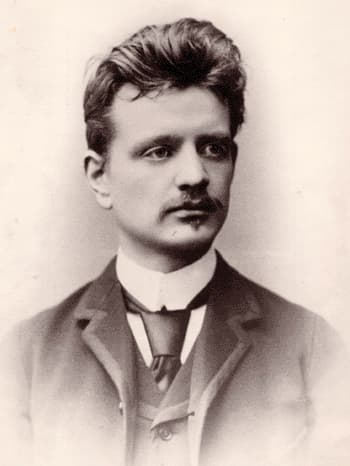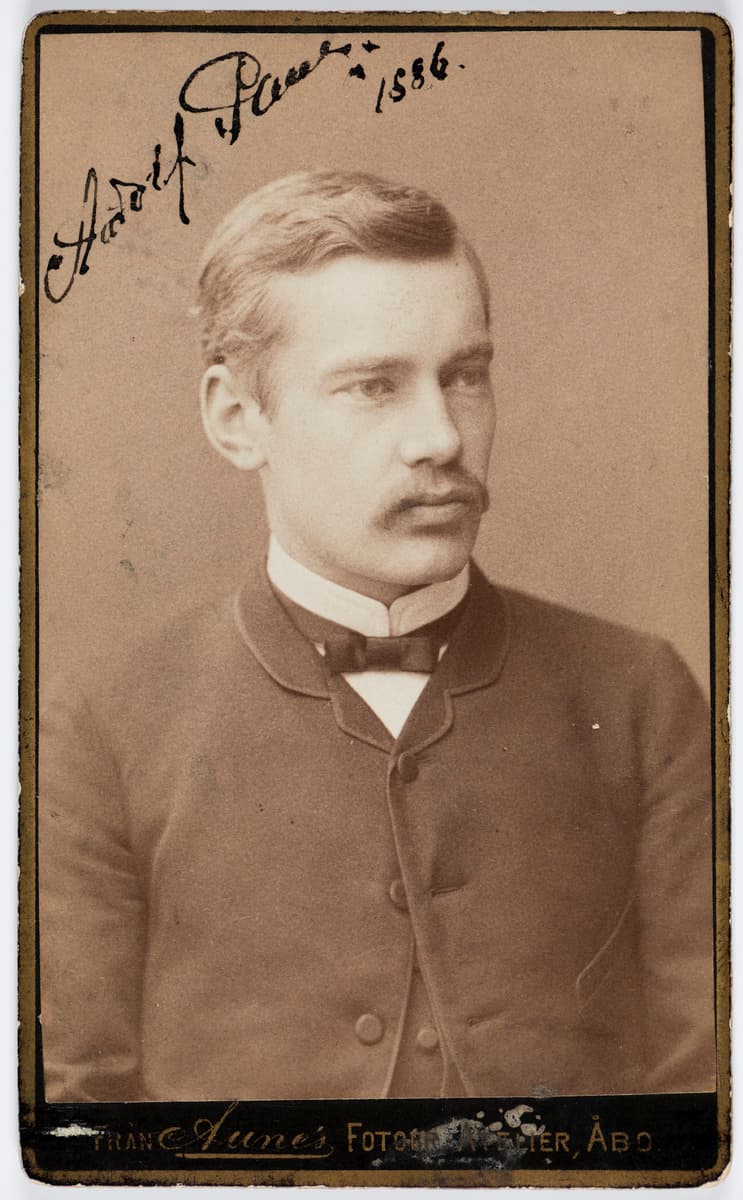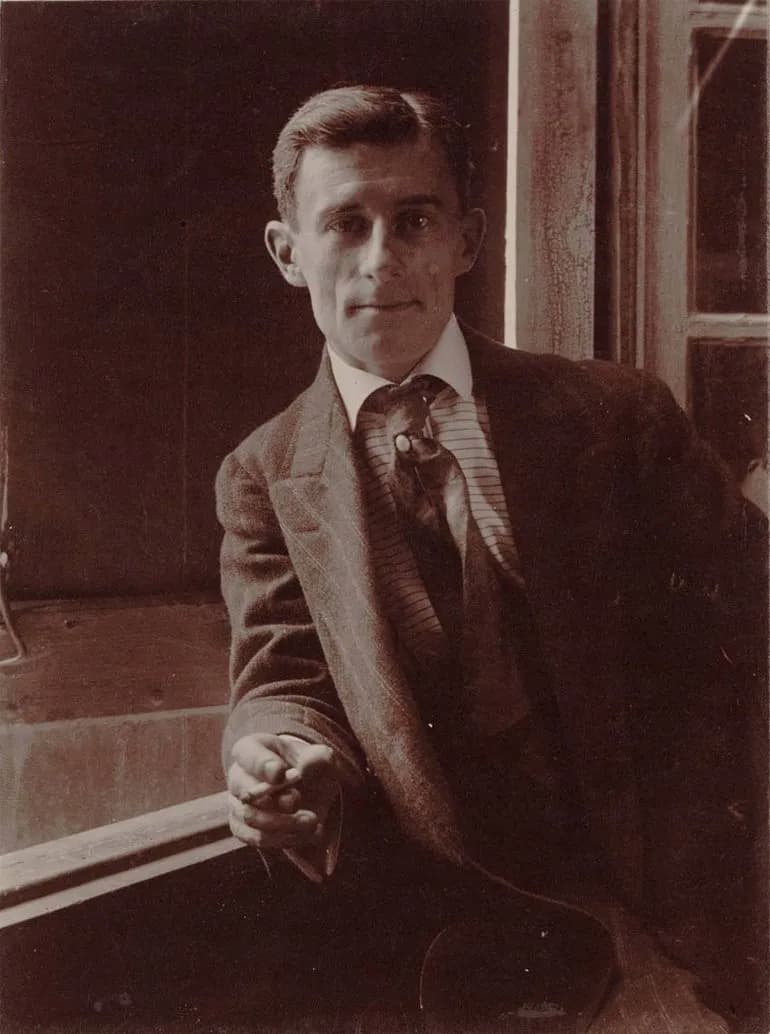Lying at home recovering from an illness, the young Jean Sibelius (1865-1957) took the opportunity to reassess his life. In early 1889, he’d played solo violin in Beethoven’s Romance in F with the Academic Orchestra. When he fell ill in April that year, his hypochondriac side kicked in and he believed himself dying. In looking at his accomplishments, he realized he did not really have a future as a violin soloist. When Adolf Paul brought some flowers to his sick room, he wrote a piano suite for his friend.

Jean Silbelius, 1889–1890 in Berlin
Florestan, despite its title reminiscent of Schumann’s Carnaval from a decade earlier depicting his fiery emotional side, is a meditative and lyrical work that tells the story of an unhappy man wandering around a forest who falls in love with a water-nymph, but can’t keep her and returns to his lonely wandering.

Adolf Paul, 1886
The dedicatee, Adolf Paul (1863-1943), described the work in 1935 at a celebration of Sibelius’ 70th birthday as ‘Words could not express the sheer beauty of this captivating tone poem. It is, nonetheless, one of the most beautiful and most atmospheric works ever produced by the young Sibelius. And he dedicated it to me—for an armful of roses. And thereby he gave me the most precious of my youthful memories’. Paul had been studying music with Sibelius at the Music Academy of Helsinki. They both studied with Ferruccio Busoni who took the two to Germany when he moved there later in 1889.
Sibelius gave us this programme for the work:
I. Florestan goes out into the forest. He is dejected and unhappy. Scents of wild moss and wet bark.
II. Florestan comes to a cataract whose foaming waters are transformed before his eyes into water-nymphs. Scents of water lilies.
III. One of the water-nymphs has moist, black eyes and golden yellow hair. Florestan falls in love with her.
IV. Florestan tries to entice her to him, but she disappears. Dejected and unhappy. Florestan returns through the forest.
In the first movement, we can hear through the music that Florestan is also running his fingers over the bark of the trees, looking at the birds overhead, watching the butterflies, etc. because Sibelius has given us so much more than a depressed man in the woods.
Jean Sibelius: Florestan, JS 82 – I. Moderato (Joseph Tong, piano)
When he gets to the waterfall, we’re almost in a dance movement. The triple tempo reinforces this. What’s interesting about the description is that Sibelius has given us not only a description but also, as he did for the first movement, the scent in the air, which really isn’t in the music. This was the first time Sibelius used the sixth chord that he would become so famous for.
Jean Sibelius: Florestan, JS 82 – II. Molto moderato (Joseph Tong, piano)
In the slow movement, the water-nymph is in her element, floating through the water. Florestan can’t help but be impressed with her beauty and assurance. Here the technical inspiration came from Tchaikovsky and thematic imitation.
Jean Sibelius: Florestan, JS 82 – III. Andante (Joseph Tong, piano)
The delicate dance of enticement starts but to no avail. He tries again and again, but she leaves him to return to the water. He turns back to the trees. The same melancholic march-like theme from the first movement is repeated here.
Jean Sibelius: Florestan, JS 82 – IV. Tempo I (Joseph Tong, piano)
It’s a slight piece, with a nice mix of styles throughout. Sibelius wrote it on a second day, 22 April 1889. As a private piece, written for Adolf Paul, it wasn’t given a public performance until 9 December 1996 by Izumi Tateno, president of one of the two Japanese Sibelius societies.
For more of the best in classical music, sign up for our E-Newsletter


